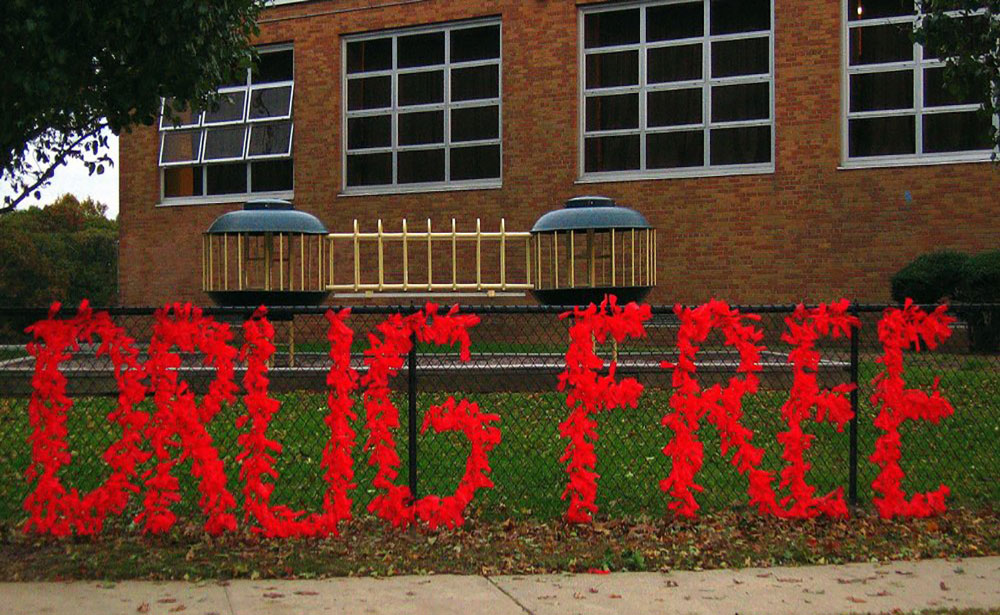To fight adolescent drug abuse, schools across the U.S. have been striving to implement more effective drug abuse prevention and education programs.
While the U.S. government has invested millions of dollars into producing anti-drug TV ads, the majority of them have been found ineffective in deterring youth from drug use.
A group of researchers from the University of Pennsylvania and the Westat corporation in Rockville, Maryland examined the September 1999 to June 2004 National Youth Anti-Drug Media Campaign. The goals of the campaign were to educate parents and children on the dangers of drug use, prevent adolescents from taking drugs and encourage current substance abusers to quit. The research team found that while over 25,600 surveyed children and adults reported high rates of exposure to anti-drug ads, the advertisements use did not decrease the prevalence of marijuana use among adolescents between the ages of 12 and 18 from 2000 to 2004. Since then, marijuana use has increased among surveyed teenagers, according to the University of Michigan’s 2017 Monitoring the Future survey.
To curb adolescent drug abuse, the government has worked with organizations and encouraged local communities to develop drug education and prevention programs.
From 1997 to early 2018, the Substance Abuse and Mental Health Services Administration (SAMHSA) oversaw the National Registry of Evidence-Based Programs and Practices. In January, the program was replaced by the Evidence-Based Practices Resource Center, which features information pertaining to clinical practices and addiction treatment methods as well as materials for school- and community-based programs.
Although numerous materials and programs aim to educate kids and parents about the dangers of drug use, U.S. public school system standards for alcohol, tobacco and other drug use (ATOD) curriculum vary from state to state and by grade level. Researchers accessed ATOD curriculum from many sources, including the National Association of State Boards of Education’s State School Health Policy Database. The study found that elementary schools tend to focus on the emotional and social aspects while middle and high schools emphasize the negative effects of drug abuse. However, due to content and implementation variations, ATOD curriculum in nearly all 50 states were found to be far below recommended standards.
A number of schools along with organization partners around the U.S. have been able to overcome perceived challenges and implement improved drug education, prevention and addiction treatment efforts.
One way in which schools and law enforcement officials have collaborated is through offering the Drug Abuse Resistance Education (DARE) program. DARE was begun by the Los Angeles Unified School District and the city’s chief of police in 1983. Since then it has grown into a national program and been adopted by many school districts. Certified law enforcement officials visit classroom and deliver drug education courses to elementary, middle and high school students.
When various studies found the DARE ‘Just Say No’ campaign to not significantly reduce adolescent substance abuse rates, program officials changed their approach. Collaborating with behavioral scientists helped incorporate new evidence-based approaches to its drug education curriculum.
In 2008, DARE adopted Pennsylvania State University and Arizona State University’s ‘keepin’ it REAL’ prevention program — REAL stands for Refuse, Explain, Avoid and Leave — to develop more interactive approaches to help adolescents learn good decision-making behavior. The organization even created a new set of terms — Define, Assess, Respond, Evaluate — for the decision-making model to mirror the original DARE acronym. Since 2016, DARE has developed a new high school curriculum as well as lesson plans centered around opioid use prevention. While some of these new changes have drawn criticism, some researchers state that DARE appears to be producing more favorable results.
In the event where students may overdose on a school campus, many school districts are now required to provide naloxone kits. The adoption of such policies has received approval from various organizations, including the National Association of School Nurses. New Jersey will be one of the latest states to follow suit. Last month, state lawmakers passed a bill to provide overdose kits to secondary schools.
Around the U.S., school district officials are determining ways to place more of an emphasis on helping students with addiction recovery and less on disciplining them for drug abuse. For example, the Visalia Unified School District will refer students to local treatment programs. With the assistance of a grant, it has also improved its drug prevention courses. While school suspensions may still be issued for drug-related offenses, officials want to work with parents to determine how to lead students to a path of success.
In addition to investing grant money into school drug education programs, other school districts are also exploring avenues to have teachers and parents become more involved in intervention, addiction treatment and prevention efforts. A recent survey suggested that parental support may reduce the chance of children experimenting with drugs or alcohol.
A school district in Lee County, Alabama worked with the county’s district attorney to offer a training program to educate teachers on leading successful interventions after recognizing substance abuse symptoms among students. School district officials emphasized how parental collaboration is important.
With advancing technology, some schools have begun introducing online-based prevention programs to students.
According to a systematic review funded by the Australia National Health and Medical Research Council Research Fellowship, online-prevention programs seemed to overcome obstacles faced in traditional prevention models. Researchers noted that the use of more internet-based programs in Australia and other countries could potentially reduce teen drug and alcohol consumption.















